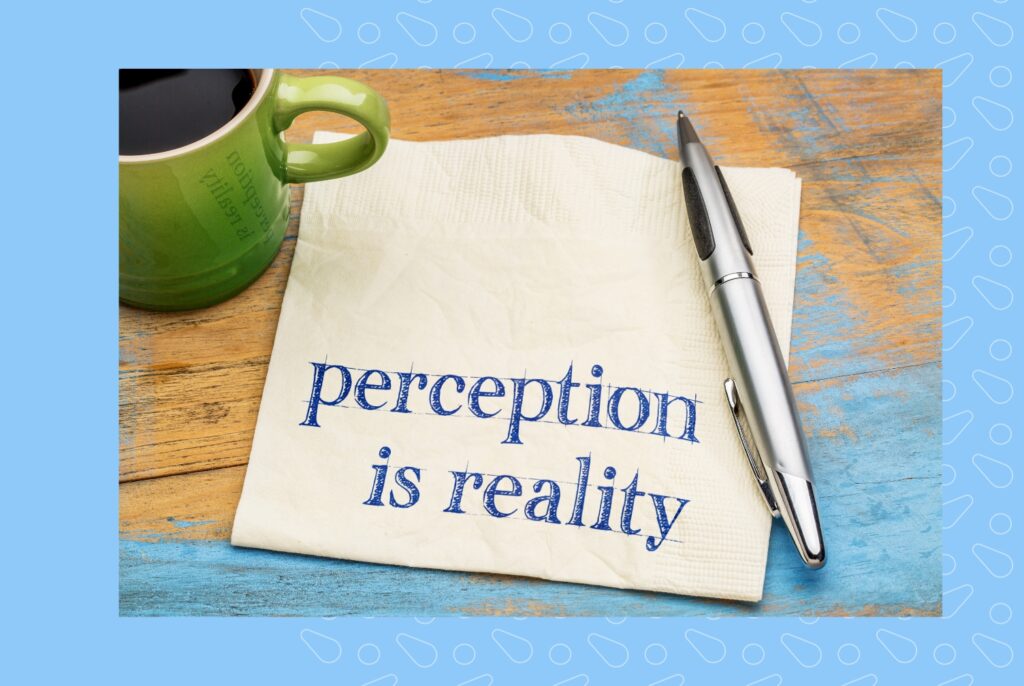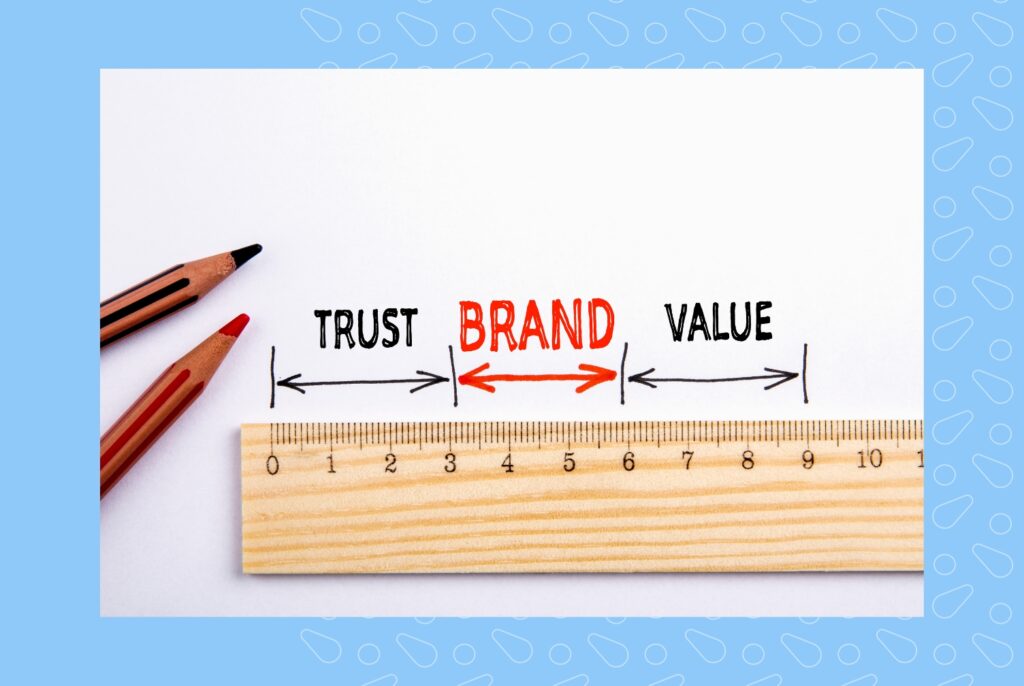What’s the first thing that comes to mind when someone mentions your brand name? The gut reaction people have to your business can make or break its success.
Today’s marketplace is competitive and transparent, so managing brand perception isn't just important - it's imperative. The stakes are high, with 91% of customers admitting they'd switch to a competitor following a poor customer experience.
By getting inside the minds of your customers, you’ll gain actionable insights to craft a brand image that resonates, engages, and stands out from the competition.
This guide will uncover what your target audience thinks about your brand. We’ll look at actionable tips to measure brand perception, identify gaps between belief and reality, and outline strategies to align the brand experience with customer expectations.
Table of contents
- What is brand perception?
- What is the purpose of brand perception?
- How to measure brand perception?
- Why does positive brand perception matter?
- How do you create a strong brand perception?
- How does your brand positioning increase with a good brand perception?
- How does a negative brand perception impact your reputation?
- 6 Tips for turning a negative brand perception into a positive one
- How to determine your brand’s perception?
- What is a brand perception survey?
- How can customer service improve your brand equity?
- FAQs on brand perception
- Improve your brand perception with Birdeye’s reputation management
What is brand perception?
Brand perception is customers’ cumulative impression of your company based on every interaction and experience they’ve had.
Brand perception refers to how consumers view, think, and feel about a company and its offerings. It develops from direct interactions, word-of-mouth, marketing, public relations, social media, and other channels.
Brand perception is subjective and can be influenced by consumer expectations, preconceived notions, and a company's reputation. It shapes consumer behavior and impacts a brand's success.
What is the purpose of brand perception?
The purpose of brand perception is to understand how target consumers view and relate to a brand. Positive brand perception provides several benefits, such as creating brand advocates, providing a competitive advantage, allowing premium pricing, attracting good talent, etc.
Understanding how the target audience sees your brand gives you the power to shape that perception. A positive image adds to your brand equity. And that influences the customer’s purchasing decisions. The result is higher sales and revenue.

How to measure brand perception?
Measuring brand perception is crucial as it provides valuable insights that can significantly impact a brand’s success and sustainability:
- Enhance customer experience
- Understand customer sentiments
- Identify internal and external strengths and weaknesses
- Guides market strategies
- Builds credibility among customers
Brand perception measurement can be done through various methods, like:
- Brand perception surveys
- Brand perception study
- Brand perception research
- Social listening
1. Brand perception surveys
These are used to gather direct feedback from your target audience. You can include questions about how they perceive your brand, what qualities they associate with it, and their overall impression.
Example of a brand perception survey you can use: A smartphone brand conducts an online survey asking customers to rate their perception of the brand on aspects like product quality, customer service, and innovation. They analyze responses to understand customer sentiments and areas for improvement.

2. Brand perception studies
These studies often involve qualitative and quantitative research methods to gain comprehensive insights. Undertake in-depth studies to analyze customer attitudes, preferences, and behaviors related to your brand.
Example of a brand perception study you can use:
An automobile manufacturer conducts a comprehensive study involving focus groups and in-depth interviews. Researchers delve into participants’ perceptions, exploring factors such as design, safety, and reliability.
The study uncovers nuanced insights about how different demographics perceive the brand.
3. Brand perception research
It engages in ongoing research to monitor changes in brand perception over time.
This involves tracking specific metrics or conducting regular surveys to assess shifts in customer attitudes.
Example of brand perception research done right:
A fashion retailer conducts annual brand perception research, tracking brand awareness, customer loyalty, and purchase intent. The company identifies trends by comparing data over several years, allowing it to adapt marketing strategies based on changing customer perceptions.
4. Brand perception measurement
It uses the key performance indicators (KPIs) related to brand perception. These could include metrics like brand awareness, brand loyalty, customer satisfaction, and perceived brand value.
Regularly measure and analyze these metrics to gauge brand perception.

Example of brand perception measurement done smartly:
A coffee chain sets KPIs, including customer satisfaction scores, social media engagement, and brand mentions. Regularly, they assess these metrics.
If customer satisfaction drops, they investigate reasons such as service quality or menu changes, enabling them to address issues promptly and maintain a positive brand perception.
5. Social listening tools
It monitors online conversations about your brand.
Analyze mentions, comments, and sentiments on social media platforms and other online channels. Social listening provides real-time insights into how people perceive your brand online.
Example of a cosmetic brand that uses social listening tools to monitor social media platforms:
They track hashtags related to their products and analyze customer comments. By observing positive sentiments about their new skincare line and addressing concerns mentioned online, they adapt their marketing and product strategies to enhance positive brand perception.
Why does positive brand perception matter?
Simply put, people buy from brands they trust. Creating a familiar and consistent brand can increase your revenue by up to 20%. Customers will not buy from you if you don’t positively influence the customer’s beliefs. And your brand will not grow.
A good brand perception comes with countless advantages, such as:
- Influences purchasing decisions: A reputable brand will always win over its less trustworthy competitors.
- Increased customer trust: Customers who trust your brand will buy from you even when they have plenty of other options.
- Competitive edge: Good brand perception helps customers easily recognize your brand. It makes your brand unique and desirable.
- Supports premium pricing: Customers will pay more to shop from brands they know and trust. And you will make more profits in the long run.
- Facilitates market expansion: Launching a new product is a breeze when you have a loyal customer base. Customers already familiar with your brand won’t hesitate to buy your new products.
- Builds customer loyalty: Customers with a positive brand perception will become loyal customers and advocates. They will also recommend the brand to others.
How do you create a strong brand perception?
- Consistent brand identity: Maintain a cohesive visual identity, logo, and messaging. For example, Coca-Cola’s iconic red color and timeless “Open Happiness” slogan.
- Quality and reliability: Deliver on promises consistently, like Toyota’s reputation for reliable cars.
- Customer engagement: Foster meaningful interactions, like Starbucks’ personalization of coffee orders.
- Storytelling: Craft compelling narratives, such as Nike’s empowering “Just Do It” campaign.
- Social responsibility: Engage in ethical practices, as seen in Patagonia’s commitment to environmental sustainability.
- Differentiation: Highlight unique selling points, as Apple does with its emphasis on design and user experience.
- Brand associations: Form partnerships with brands that align with your values, like Red Bull’s collaborations with extreme sports events.
- Employee advocacy: Ensure staff embody brand values, exemplified by Zappos’ renowned customer service culture.
- Consistent brand experience: Ensure a consistent and positive customer experience across all touchpoints, as seen in Disney’s commitment to creating magical moments.
- Adaptability: Stay responsive to market trends and consumer feedback, like how Netflix evolved from a DVD rental service to a streaming powerhouse.

How does your brand positioning increase with a good brand perception?
Brand reputation management must be your priority to make your brand unique. Your brand’s value increases when your target audience sees it in a positive light. Customers will send friends and family your way.
Here are some other ways good consumer perception contributes to a strong brand:
- Builds credibility
- Builds an emotional connection
- Positive reviews and ratings
Beyond Logos: How Brand Perception Shapes Customer Opinions
Want to see the impact of Birdeye on your business? Watch the Free Demo Now.
How does a negative brand perception impact your reputation?
A negative brand perception shatters your company’s standing. Your target audience gets all the wrong feels when your brand is beset with poor reviews and bad press. Some other reasons include poor customer service and public relations mishaps.
Negative brand perception can lead to the following:
- Loss of trust: Customer loyalty takes a nosedive when trust is lost. And customers shrink away from purchasing from a brand they don’t trust.
- Damaged brand equity: Brand equity is hard to nail down but greatly impacts your revenue. It’s the quality makes customers pay more for a product with your brand name. You can’t be competitive without brand equity.
- Decreased sales: It’s obvious, but bear pointing out. Sales go down if consumers perceive you have a negative brand perception.
- Increased marketing costs: Once your brand reputation sinks, you need to spend big to get it back. That means spending more on advertising, public relations, and promotional activities.
- No competitive advantage: A negative brand perception disadvantages your business. People have a lot of options. And they are likely to choose a trusted competitor over your brand.
- Long-term damage to your brand’s image: Negative brand perception takes a long time to fix. The poor perception may still linger even after you put in blood, sweat, and tears to change it.
Real-life example of brand perception gone wrong: Chipotle's E.Coli Outbreak in 2015 Background: An E. coli outbreak spread across Chipotle locations in the US, sickening over 50 customers in several states. Impact: The outbreak was a huge blow to Chipotle's brand image of serving natural, fresh, high-quality food. Customers perceived it as a health risk. Fallout: The stock price fell 30% immediately after news of the outbreak. Revenue plunged due to customers avoiding Chipotle for months after. Recovery: Chipotle implemented new food safety procedures and marketing to regain trust. But recovery was slow and sales decreased for years after. This example shows how in the food/restaurant industry, a single food safety failure can annihilate brand perception built on quality and health standards. Customers felt betrayed by the breach of trust in Chipotle's food preparation. It demonstrates how fickle brand perception can be following health crises.
6 Tips for turning a negative brand perception into a positive one
Dealing with negative brand perception is no piece of cake. But you can turn lemons into lemonade. Transform your poor perception into a new and better brand image. A good brand strategy and a proactive approach will get you there.
1. Acknowledge the problem
This first step is acknowledging where you went wrong, which goes a long way toward showing your customers that you care. It shows you respect their opinion and think highly of their feedback.
2. Apologize and take responsibility
Own up to mistakes. Don’t try to argue, blame, or make excuses. Express regret for the disappointment and inconvenience your customers experienced.
3. Listen and understand them
Listen to your customers and understand their concerns. Conduct a brand perception survey, read reviews, or engage with customers online.
4. Offer a solution
The next step is to offer a solution to the customer’s problem. These could be improvements or changes you’re making. Show customers that you value their input and are committed to improving things.

5. Reinforce brand values
Point out your brand’s values and how the changes will help align with those values. This will go a long way toward rebuilding trust and customer loyalty.
6. Engage your audience and seek feedback
Try to be connected with them across all the online platforms, social media, or online discussion forums. Ask for feedback on the changes. Address any concerns. And respond to comments.
Remember, Rome wasn’t built in a day. And turning a negative brand perception into a positive one won’t happen overnight. It’ll take time, dedication, and genuine efforts to provide value and a better customer experience.
How to determine your brand’s perception?
Understanding how your target audience perceives your brand is crucial to marketing success. But with consumers bombarded daily by brand messages, how can you cut through the noise to find out what people think about your company?
By using the right mix of brand perception analysis tools. Here are the top 4 ways to determine brand perception:
1. Social media monitoring
People are more open about what they think about brands online. So, keep track of online mentions using social listening tools or Google alerts. You also want to take notice of social media comments and perform review management using the Birdeye platform, and online forums such as Reddit or Quora.
2. Brand audit
A brand audit is a detailed analysis of how customers and stakeholders see the company’s brand. A brand audit helps a business identify the company’s strengths, where it needs to improve and compare itself to competitors.
3. Net promoter score(NPS)
NPS measures brand perception and customer loyalty. To calculate the net promoter score, you need to find out how likely your customers are to recommend your brand to other people. This is often gauged on a scale of 0-10. A high score means customers perceive your brand positively.
4. Conduct a customer satisfaction survey
A customer satisfaction survey perception is a first-rate way to learn what your target audience thinks about your business. Zero in on emotional, cognitive, and action-oriented questions.
Alternatively, you can also do a brand perception survey.

What is a brand perception survey?
A brand perception survey collects feedback about how the target audience sees the brand. The brand perception survey aims to understand people’s emotions, beliefs, and associations with your brand.
The questions cover brand awareness, associations, and sentiment topics. The target audience can include current customers, potential customers, or the general population.
Share your brand perception survey widely to get plenty of feedback. Use online reviews, phone interviews, or in-person interviews. Assure anonymity and confidentiality. This encourages people to be candid.
How can customer service improve your brand equity?
Customer service plays a huge role in shaping brand equity. You need to improve your customer service to improve your brand equity. World-class customer care has the following impact on brand equity:
- Increased customer satisfaction: There are higher levels of customer satisfaction when customer service is at the top. Customers who are satisfied with your products and services will have a positive impression of your brand.
- Increased referrals and positive word-of-mouth: Customers who love your goods and services are likelier to recommend your brand to others. Word-of-mouth marketing builds a positive brand image.
- Increased customer loyalty: Customers who receive good customer service will likely become repeat customers. This creates brand loyalty, and even when presented with options, they’ll be more likely to choose your brand.
- Stronger brand trust: You build trust when you offer reliable customer service. Customers know they can depend on you to address their needs and concerns.
Your brand’s image is always evolving. And that’s why reputation management is ongoing. Use Birdeye’s reputation management solutions to closely monitor, manage, and refine your brand reputation.
FAQs on brand perception
A negative brand perception is the overall public impression that your brand stinks. It’s the sense that consumers should avoid buying from you. They may think your products are poor quality or customer service is bad.
Improving your customer’s experience is the first step to improving brand perception. Analyze reviews and customer feedback to pinpoint and fix problems leading to a negative brand perception.
Changing your brand’s perception takes time and starts with improving your customers’ experience. From there, take active steps to increase reviews and get the word out on your improvements.
Here are a few brand perception examples:
1. Google’s brand perception centers on reliability, user-friendliness, and being the go-to source for online information.
2. Dove’s brand perception focuses on real beauty, inclusivity, and body positivity in its skincare and beauty products.
3. Tesla has crafted a brand perception of sustainability, electric vehicles, and a commitment to reducing carbon emissions.
Improve your brand perception with Birdeye’s reputation management
Brand perception is the mainstay of business success. And a first-rate customer experience is the first step to creating a positive brand perception. From there, get involved in positive social values. Be consistent in your messaging. And above all, get serious about collecting as many positive reviews as possible.
Birdeye’s comprehensive online reputation management solutions can take your brand perception to the next level. We help elevate your brand’s image and create lasting customer connections. Click the banner below to learn more.

Originally published


![this is a 1 / 1 – [Feature image] of the blog about 31 irresistible car sales email templates to close more deals.](https://birdeye.com/blog/wp-content/uploads/Feature-image-31-irresistible-car-sales-email-templates-to-close-more-deals-375x195.jpg)
![[Feature image] Are you on these 40+ powerful eCommerce review sites blog](https://birdeye.com/blog/wp-content/uploads/Feature-image-Are-you-on-these-40-powerful-eCommerce-review-sites_-375x195.jpg)